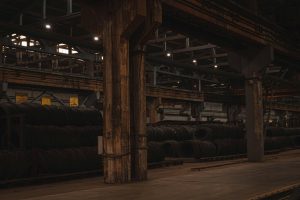Micro-Fulfillment Centers: Tiny Warehouses in Urban Basements
Imagine living in a bustling urban city, with convenience stores, restaurants, and shops within walking distance of your home. However, with the rise of e-commerce and online shopping, traditional retail spaces and warehouses may not be enough to meet the demands of the fast-paced urban lifestyle. As a solution, micro-fulfillment centers, or tiny warehouses, are being introduced into the urban landscape. These compact facilities offer quick and efficient delivery of goods to city dwellers, providing a seamless shopping experience. In this article, we will delve into the concept of micro-fulfillment centers and how they are transforming the supply chain industry in urban areas.
The Rise of Micro-Fulfillment Centers in Urban Areas
In recent years, the growth of e-commerce has been evident, with online retail sales surpassing brick-and-mortar sales. As more and more people turn to online shopping for their everyday needs, traditional fulfillment centers located in the outskirts of cities are struggling to keep up with the demand. This has led to longer delivery times and increased shipping costs for customers living in urban areas.
However, with the emergence of micro-fulfillment centers, this gap is being filled. These tiny warehouses are strategically located in the heart of the city, making delivery to customers faster and more cost-effective. With the rise of same-day and even two-hour delivery options, micro-fulfillment centers are revolutionizing the way goods are distributed in urban areas.
The Concept of Micro-Fulfillment Centers
Micro-fulfillment centers are compact warehouses that are typically located in urban basements, parking garages, or abandoned retail spaces. With the use of advanced technology and automation, these facilities are able to pack and ship orders quickly, reducing the time and cost of delivery. Unlike traditional fulfillment centers, which can cover hundreds of thousands of square feet, micro-fulfillment centers can range from just a few hundred to a couple of thousand square feet.
The Benefits of Micro-Fulfillment Centers
One of the main advantages of micro-fulfillment centers is their strategic location. By being in close proximity to customers, orders can be fulfilled and delivered faster, reducing the shipping times and costs for both retailers and customers. This makes it especially beneficial for those living in densely populated urban areas, where traditional fulfillment centers may be too far away.
In addition, the smaller size of these facilities allows for more efficient use of space and inventory management. With the help of automation, products can be stored and retrieved quickly and accurately, minimizing the risk of human error and maximizing productivity. This also allows for a wider range of products to be stocked, offering customers a greater selection of goods to choose from.
The Impact on the Supply Chain Industry
Micro-fulfillment centers are transforming the supply chain industry in urban areas. By reducing the distance goods need to travel, these facilities are streamlining the logistics process, making it more sustainable and cost-effective. This is especially important in today’s world, where consumers are becoming increasingly conscious of the environmental impact of their purchases.
In addition, the rise of micro-fulfillment centers is creating job opportunities in urban areas. With the need for automation and technology, new roles such as robotics engineers and data analysts are being introduced, providing more diverse employment options.
In Conclusion
In conclusion, micro-fulfillment centers are tiny warehouses that are changing the way goods are delivered in urban areas. With their strategic location, advanced technology, and compact size, these facilities are streamlining the supply chain process and improving the shopping experience for customers. As e-commerce continues to grow, it is expected that the popularity of micro-fulfillment centers will also increase, making them an integral part of the urban landscape.











